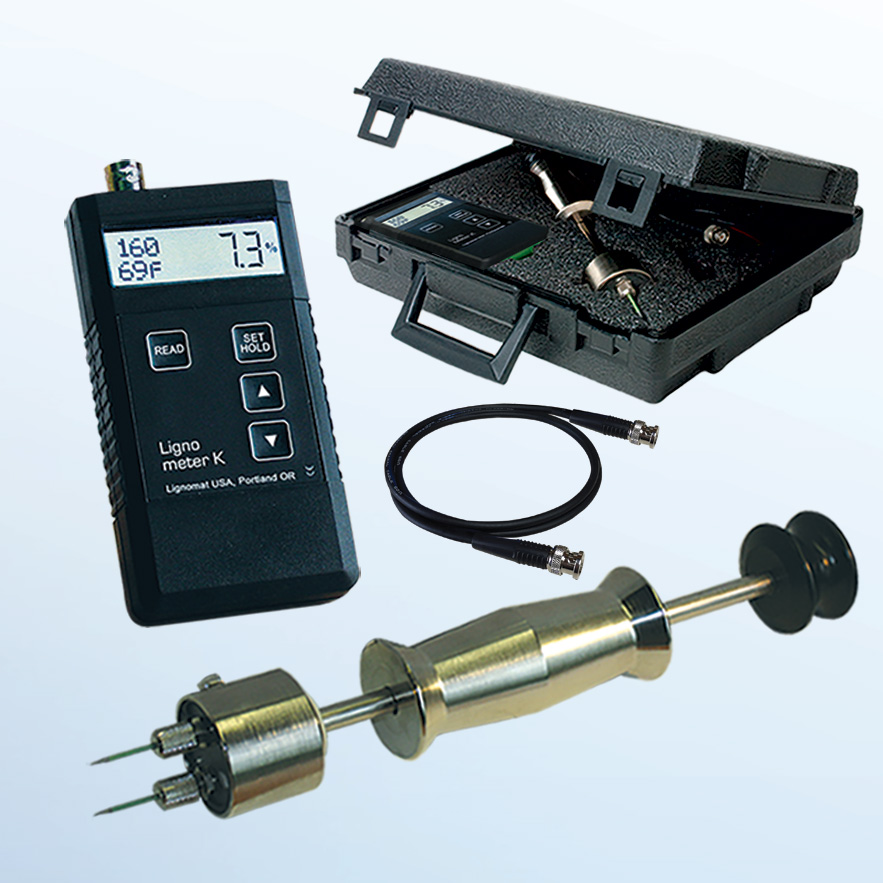Moisture Meter Purchasing Overview: What to Try to find in High-Quality Instruments
Moisture Meter Purchasing Overview: What to Try to find in High-Quality Instruments
Blog Article
Explore the World of Moisture Meters: Every Little Thing You Required to Know
In the realm of wetness meters lies a globe of accuracy and usefulness that frequently goes unnoticed. Recognizing how moisture meters operate, the various types readily available, and their varied uses can drop light on their importance in making sure high quality and effectiveness.
How Moisture Meters Work
Moisture meters operate by determining the electric conductivity or capacitance of products to establish the moisture material existing. These meters are indispensable devices across numerous industries, consisting of farming, construction, and woodworking. By making use of different techniques such as pinless or pin-type technology, moisture meters supply accurate analyses that aid professionals make notified choices.
Pin-type moisture meters work by putting the sharp pins into the material being examined. The electric conductivity between the pins is after that measured, with greater dampness levels bring about increased conductivity. Moisture Meter. On the other hand, pinless moisture meters make use of electromagnetic signals to check a larger area without causing any type of damages to the product's surface. These meters are optimal for rapidly assessing moisture levels in huge areas or ended up products.
Despite the technique utilized, wetness meters play an important duty in protecting against issues such as mold and mildew growth, structural damage, or item problems brought on by excess dampness. Recognizing exactly how these meters work is crucial for making certain the top quality and honesty of materials in different applications.
Kinds of Moisture Meters
Given the crucial role moisture meters play in numerous markets, it is necessary to recognize the various types offered to professionals for accurately examining dampness levels - Moisture Meter. There are largely 2 main kinds of moisture meters: pin-type and pinless dampness meters

On the other hand, pinless dampness meters utilize electro-magnetic sensing unit plates to check a bigger area of the material without creating any type of damage. This kind appropriates for quickly scanning big locations and is generally utilized for flooring, walls, and ceilings. Pinless meters are practical for taking readings on finished surface areas without leaving any noticeable marks.
Both sorts of wetness meters have their benefits and are chosen based on the details needs of the task handy. Comprehending the distinctions between these kinds is critical for experts to make accurate wetness analyses.
Applications Across Industries
With diverse capabilities, moisture meters locate extensive application throughout various industries, helping professionals in making certain optimum conditions for frameworks and materials. In the farming market, wetness meters are very useful for determining the dampness web content in grains, seeds, and hay, making certain quality control and stopping mold growth. Construction professionals rely upon moisture meters to assess the dampness levels in building products like concrete, wood, and drywall, which is critical for preserving structural integrity and avoiding concerns like rot or mold. The floor covering industry uses dampness meters to determine the dampness web content in subfloors prior to setting up numerous floor treatments, stopping pricey problems as a result of excess dampness. In the food sector, dampness meters are used to keep an eye on and regulate moisture degrees in items such as grains, nuts, and dried fruits to maintain freshness and top quality. Furthermore, dampness meters play a vital role in the repair and damage analysis sector by assisting specialists recognize and address water damage in structures quickly. Across these diverse sectors, moisture meters are essential devices for making sure the top quality, security, and longevity of different products and items.
Tips for Utilizing Dampness Meters
Use the dampness meter's calibration setups to make sure accurate readings when determining the moisture web content in numerous products. Furthermore, make read certain the meter is established to the correct dampness variety for the material you are gauging to obtain the most precise outcomes.
When utilizing a pin-type dampness meter, put the pins to the proper depth suggested for the product being evaluated. This makes certain that the wetness readings are extracted from the right depth within the material, this link offering a much more precise depiction of its wetness web content. For pinless wetness meters, remember to preserve proper call with the product's surface area to get reliable analyses.
Routinely check and change the batteries in your dampness meter to stop imprecise analyses because of reduced power. Shop the meter in a safe and completely dry area when not in use to lengthen its lifespan and keep its accuracy. By adhering to these pointers, you can optimize the efficiency of your dampness meter and obtain precise moisture material dimensions throughout different materials.
Upkeep and Calibration
To guarantee the precision of wetness web content dimensions, routine maintenance and calibration of the moisture meter are essential steps in its correct performance. Calibration adjusts the moisture meter to ensure that it offers constant and trustworthy results.
Calibration must be executed occasionally, particularly if the dampness meter is made use of frequently or in important i loved this applications where specific dimensions are required. Many dampness meters feature calibration devices or can be calibrated by professional services. Moisture Meter. It is recommended to keep a log of calibration dates and results to track the performance of the wetness meter in time. By adjusting the wetness and preserving meter regularly, customers can rely on the accuracy of the dampness content measurements acquired.
Verdict

To conclude, dampness meters play a critical function in numerous sectors by precisely gauging the dampness content of materials. Understanding just how these tools work, the various kinds readily available, and correct maintenance and calibration are crucial for obtaining trustworthy outcomes. Whether in farming, manufacturing, or building and construction, the usage of moisture meters helps make certain high quality control and effectiveness in processes.

In conclusion, dampness meters play a crucial duty in numerous industries by accurately measuring the moisture content of materials.
Report this page